Degree of coverage and data quality
Article
|Last update
Degree of coverage and completeness
All women with invasive breast cancer in Norway should be included in the registry. The inclusion criteria for the registry are patients with breast cancer (C50 according to ICD-10) and precursor to breast cancer (Ductalt carcinoma in situ/DCIS, D05). Tumors in the breast due to sarcoma, lymphoma, Phyllodestumor and Paget disease are not included in the registry. Lymphoma is included in the Norwegian Registry for Lymphoma and Lymphoid Leukaemias.
The Cancer Registry's basic registry contains information on 99.99 per cent of all patients diagnosed with breast cancer. The coverage rate for assessment reports for breast cancer in 2023 is 93.1 per cent.
The degree of coverage of clinical reports for each hospital is specified in the Annual report 2023 Norwegian Breast Cancer Registry (Norwegian only).
The Cancer Registry of Norway has had a strong focus on increasing the degree of coverage in recent years, which has resulted in improved reporting for all quality registries.
In the autumn of 2020, work began on a major revision of the Breast Cancer Register. The overall aim was to increase the degree of coverage through simplified registration, but also automated collection of data. The report forms for investigation, surgery and oncology are now simplified and were implemented in 2023. Over several years we have had automated data capture for radiation therapy. We have now also received this for drug treatment obtained from the hospitals' professional systems (CMS, Cytodose). As of today, Helse Nord has no specialist system where drug cancer treatment given in hospital is reported. Norwegian Patient Registry is used as a data source for cancer drugs outside hospital (Hresept) and has therefore been used to produce data for Helse Nord. Antihormonal treatment is given on a blue prescription and is collected from the patients, the Cancer Registry does not have access to this data.
The forms for radiotherapy and chemotherapy will be discontinued and replaced with automated data capture from the radiation machines and the subject systems cytodose/CMS, respectively. Revised oncology reports will be published in autumn 2023.
Data quality
Quality assurance of data is done as an integral part of the coding and registration process. In addition, the following examples help to ensure data quality in the Cancer Registry:
- Several independent sources report information
- The information is reported at several points in the course of the disease
- The completeness of the quality register is calculated and assessed through annual coverage rate analyses
- The employees have unique expertise in coding cancer cases according to the Cancer Registry's own code book and international coding systems
- IT systems have rules and barriers for illogical combinations, incorrect information and more
- The Cancer Registry of Norway conducts analyses and control runs that reveal inconsistency in the data
- Data extraction for researchers makes it possible to check a smaller data set of information that can reveal individual errors (e.g. incorrect entry of hospital codes) or systematic differences due to different interpretations of coding systems and rules
- The quality register annually performs a validity analysis where information on radiation therapy and drug cancer treatment registered in the Cancer Register is compared with information on radiation therapy and drug cancer treatment registered in the Norwegian Patient Register

